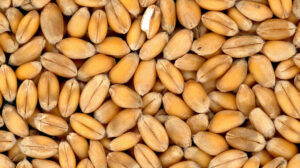
According to customs statistics released by the State Customs Service of Ukraine, the export of aluminum and aluminum products in January-May this year increased by 0.7% compared to a year earlier – to $39.735 million (in May – $8.306 million), lead and aluminum products decreased by 17.2% – to $6.684 million ($1.214 million).
Exports of aluminum and aluminum products for 2022 decreased 42.7% from 2021 to $96.972 million, lead and lead products decreased 68.7% to $11.970 million, and nickel and nickel products decreased 73.9% to $1.268 million.

Ukraine in May exported about 41,000 MWh, while importing half as much – about 20,000 MWh, according to published data on the website of the continental European network of system operators ENTSO-E.
Electric power was exported to Moldova, amounting to 23.3 thousand MWh and to Poland – 17.6 thousand MWh.
In the last week of May, after the announced shutdown of some units, there were no exports except for a few hours during certain days, and the transmission system operator, NEC Ukrenergo, did not auction any capacity for exports at the end of May, except for a few hours on certain days.
Imports came from Slovakia – about 18,000 MWh and from Moldova – about 2,000 MWh (the last few days of May data for Moldova are not displayed on the ENTSO-E website – ER). At the same time, it has increased considerably since May 20, almost six times compared to the first half of the month.
At the same time, exports decreased three times compared with the first two weeks of May.
At the same time in May, due to the growing demand for exports and restrictions on their implementation, traders for the first time began to pay for exports to Moldova and Poland (along the line KAES-Zheshuv) – UAH 1.8 million and UAH 0.5 million respectively. Also 1.3 million UAH were paid for the section for imports from Slovakia on certain days.
As reported, exports of electricity, which was resumed in April after it was stopped in October, amounted to 89.7 thousand MWh for the month. Most of the electricity was exported to Moldova – over 40 thou MWh, another 30.4 thou MWh went to Poland and 19.2 thou MWh to Slovakia.
However, exports to Slovakia lasted only four days, having been suspended since April 21 at the initiative of the Slovak transmission system operator.
The section to Slovakia for 4 days brought to Ukrenergo about 17 mln hryvnia. The NERC, Ukrenergo and the Ministry of Energy are resolving the issue of resuming exports to Slovakia.
Electricity imports in April amounted to about 4 thou MWh – 3.8 thou MWh from Slovakia (a third less than in March) and 0.1 MWh from Moldova (in March there were 1,541 MWh).

The European Union (EU) and Ukraine need to find a solution that would allow Ukrainian farmers to work, exporting grain to the EU in the volumes they need, Croatian Minister of Agriculture Marija Vučković said at an online meeting with Ukrainian Minister of Agrarian Policy Mykola Solsky on Tuesday.
Vučković is confident that the restrictions on the export of Ukrainian agricultural products to Europe, which were introduced by the European Commission until June 5, should not be extended after this date, the press service of Ukraine’s Ministry of Agrarian Policy and Food said.
Solsky, in turn, thanked his colleague for understanding. He also said that Croatia became one of the signatories of the letter of the European Commission sent by the relevant ministers of 14 states of the European Union. In this appeal, they expressed concern about the temporary ban on importing Ukrainian agricultural products to five states of the European Union.

The Cabinet of Ministers of Ukraine included sugar (trade item according to UKTVED 1701) to the list of goods, export of which is subject to licensing for the period from June 5 to September 15, 2023.
According to the representative of the Cabinet of Ministers in the Verkhovna Rada Taras Melnychuk in Telegram, the relevant decision was taken at a government meeting on Tuesday.
“Amended Annexes 1 and 5 to the resolution of the Cabinet of Ministers of 27.12.2022 N 1466 “On approval of the lists of goods, exports and imports of which are subject to licensing and quotas for 2023”. Sugar has been included in Appendix 1 “Quotas for the goods subject to export licensing” of the decree ¹ 1466 with a volume of quota of 0 tons and a licensing period from June 5 to September 15, 2023,” he wrote.
At the same time, sugar is excluded from Annex 5 of the same decree “The list of goods, the export of which is subject to licensing.

Ukraine resumed export of nitrogen fertilizers and exported 12 thousand tons in January-April this year, Infoindustriya news agency reported.
“The focus on export is not accidental: because of the decrease of activity in the domestic market of Ukraine producers will have to go to foreign markets (Turkey, Moldova, EU countries). We can even export complex fertilizers, although the cost of phosphate remains high, but the available potassium and the low price of gas opens other opportunities for producers”, – explained the director of the agency Dmitriy Gordeichuk.
According to the agency, in the four months of 2023, Ukraine also exported to Moldova and the EU 3 thousand tons of carbamide, about 2 thousand tons of lime nitrate, 565 tons of urea.
Now Ukraine has low gas prices compared to the EU countries, which allow Ukrainian producers to export profitably, primarily urea, the analysts emphasized.

Ukraine in January-April this year reduced exports of ferroalloys in physical terms by 5.5 percent compared to the same period last year – to 208,019 thousand tons.
According to the statistics released by the State Customs Service (SCS), in monetary terms, ferroalloys exports fell by 53.9% to $180.098 million.
At that, the main export was carried out to Poland (69.06% of supplies in money terms), Italy (6.10%) and Turkey (5.51%).
In addition, during this period, Ukraine imported 2.096 thousand tons of these products, which is 84.4% less compared to January-April 2022. In monetary terms, imports decreased by 77.6% – to $10.368 million.
Imports were carried out mainly from Armenia (27.92%), Colombia (13.14%) and India (12.20%).
As reported, in 2022, Ukraine reduced the export of ferroalloys in volume terms by 47.7% compared to the previous year – up to 349.560 tons, in monetary terms by 46% – to $ 564.136 million. At that, the main exports were shipped to Poland (53.25% in monetary terms), Netherlands (13.13%) and Romania (5.66%).
In addition, last year Ukraine imported 20.546 thousand tons of these products, which is 65.5% less compared to 2021. In monetary terms, imports decreased by 59.1% – to $72.705 million. Imports were carried out mainly from Norway (22.67%), China (15.60%) and Kazakhstan (14.10%).
Stakhaniv and Zaporizhia ferroalloys plants (NWF and ZZF) were organized by PrivatBank (Kyiv) before the nationalization of the financial institution. Nikopol Ferroalloy Plant is controlled by EastOne Group, created in the fall of 2007 as a result of restructuring of Interpipe Group, as well as Privat Group.